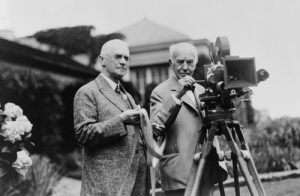
Artificial intelligence, or AI, is the concept of a machine having a mind of its own (in a sense).
These systems are made to be independent and sort of work by themselves, without much or any interaction from a human. The field of AI research was born at a workshop at Dartmouth College in 1956. Allen Newell (CMU), Herbert Simon (CMU), John McCarthy (MIT), Marvin Minsky (MIT) and Arthur Samuel (IBM) became the founders and leaders of the research of AI. They and their students produced programs that the press described as “astonishing.” Computers were learning checkers strategies (and by 1959 were reportedly playing better than the average human), solving word problems in algebra, proving logical theorems (Logic Theorist, first run was in 1956) and speaking English. By the middle of the 1960s, research in the U.S. was heavily funded by the Department of Defence and laboratories had been built all over the world. The founders were optimistic about the future of AI and one of the founders, Herbert Simon predicted that, “machines will be capable, within twenty years, of doing any work a man can do”. Marvin Minsky agreed, writing, “within a generation … the problem of creating ‘artificial intelligence’ will substantially be solved”.
Recently, AI has become very advanced, and the machines being developed can often perceive languages, solve problems, learn and plan much better than most humans. The negatives to this are that it may get to a point where there are a lot of unemployed people, as robots can do their jobs better than them, and the machines will not require payment and use food and water resources. Stephen Hawking was also under the belief that AI poses a massive threat to humanity, and it will reach a point where these AI can create AI smarter than them and so on.
Developments in thought input have also reached a decent point, where developers have a solid basis and sound knowledge on how to develop devices efficient at “reading minds.” The research has been helped through the use of MRI scanners, which has allowed scientists to discover that different parts of the brain activate when a person performs different tasks and thinks about different things. This also has a downfall, as not many people will like the idea of their minds being read, as this often seems like the last bit of privacy we have left these days, and if this technology becomes widely available and it falls into the wrong hands, peoples thoughts could be read against their will.





